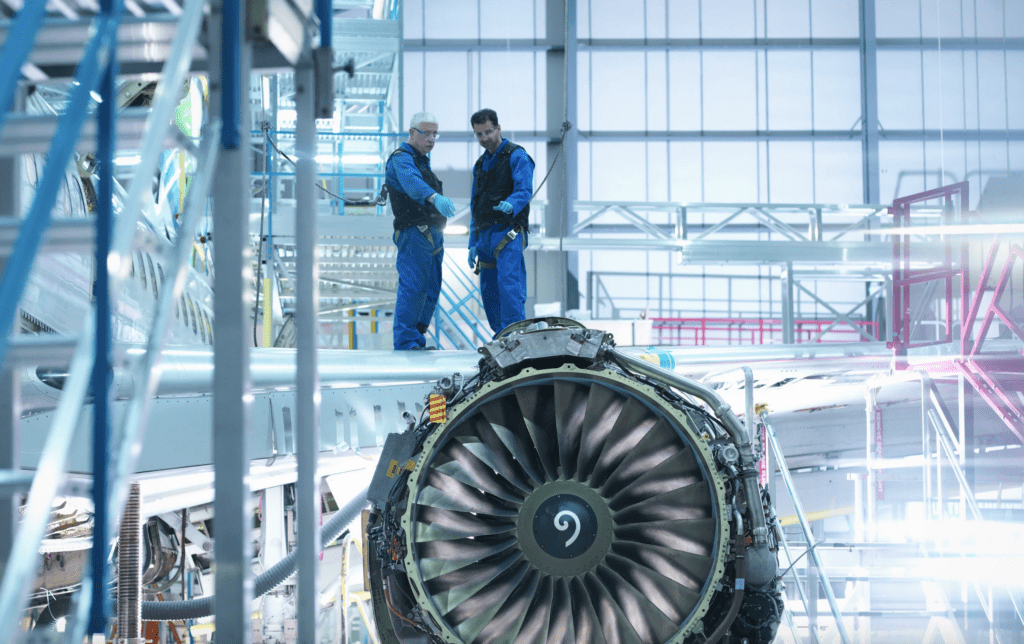
Sean Moore, Head of Aerospace & Defense Market Unit at Capgemini Americas, shares his thoughts on industry growth in the coming years, sustainability initiatives that are already taking place, and benefits of sustainability in the future. (Photo: Capgemini)
The world of technology is continuously advancing. Digital twins, 5G, and the metaverse are all prime examples of new innovations that have captivated organizations and leaders across industries. But while technology innovation is unpredictable and evolutionary, there is one priority that has nearly universal support—sustainability.
Digital transformation is required to design, build, and maintain new products because without it, efficiency in research, development and production would never progress—and innovation would be stifled. In the aerospace and defense industry, for example, new fuels, aerodynamic designs, materials, and manufacturing devices all drive critical advances in innovation that pay massive dividends.
Sustainability is the key to this process and requires new technology in order to make the evolutionary changes that drive efficiency and protect the Earth’s resources for future generations. Think of the shift to electric vehicles (EVs). In the early 2000s, hardly any auto manufacturers had a serious focus on electric cars—it was a fading thought of a culture that did not prioritize environmentalism. Today, electric vehicles are sweeping the automotive industry, with OEMs adjusting their offerings and pledging significant carbon emissions reductions in the years to come. Even the public sector has gotten involved, with the recent Infrastructure Bill allocating funds to charging infrastructure and other EV ambitions.
Sustainability is driving material changes in how industries operate, even those that have historically high emission rates—and aerospace and defense is getting in on the action.
Sustainability-driven industry growth
The aerospace and defense industry is expected to grow significantly in the coming years, but the sector has often faced challenges mitigating its carbon footprint. To offset these roadblocks, leaders have begun to make significant green investments and swiftly close that gap. In fact, recent research shows that 20% of A&D organizations reported a decrease in costs due to implementation of sustainable product design strategies.
For example, sustainability initiatives have been critical to the overall profitability of airlines for several years. Airlines looking to drive higher revenue per seat must lower operating costs, which is the impetus for new sustainability-driven technology initiatives that can enable more efficient operations.
Beyond the business benefits of sustainability, regulatory bodies such as the Federal Aviation Administration (FAA) have mandated improvements. In 2010, the FAA introduced a partnership with a handful of aerospace and defense organizations—the Continuous Lower Energy, Emissions and Noise (CLEEN) program. As a result of this alliance, over $375 million was invested in developing aircraft and engine technologies that reduce noise and emissions while increasing fuel efficiency over a five-year period.
Initiatives taking shape
For many companies in the aerospace and defense space, Digital Design, Manufacturing, and Services (DDMS) programs built on strategic partnerships with technology providers have revolutionized how they approach new research and development design, identification and tracking of production defects, and the use of new manufacturing concepts such as 3D printing or exoskeletons.
What’s further, there are many use cases already in development and in effect that are making significant strides, including:
- Advanced aerodynamic attachments such as winglets and tail cones, which increase efficiency on aircrafts. Widely deployed today, several prominent organizations in this industry have already reported efficiency gains between 20 and 25%.
- Alternative fuels—such as hydrogen-fueled aircrafts—which have been explored for over a decade. More recently, a civil and military aerospace developer has unveiled concepts that run on liquid hydrogen and plan to enter them into service by 2035, while another is creating a program that widens the view to alternative fuels such as those derived from algae, waste fats, oils, and greases.
- Increased focus on sustainability in factories and offices, such as the development of annual sustainability reports, the use of renewables to power facilities, and achieving net zero CO2 emissions from manufacturing plants.
- Intelligent Industry approaches to planning, materials management, supplier and vendor management and manufacturing, such as model-based systems engineering (MBSE), Industrial Internet of Things (IIoT), and digital manufacturing—converging operational technology (OT) and information technology (IT).
- “Factories of the future” driving the convergence of IT and OT in order to increase efficiency and speed up the timeline from development to distribution.
Benefits for the future
Beyond protecting the environment, the increased prevalence of sustainability in the aerospace and defense industry has many other positive implications.
Take aircraft, for example. As advances are made in the propulsion of aircrafts, there will be a significant lowering of emissions as well as increased range, increased power from smaller or more efficient engines, and reduced noise. All of this leads to increased profitability, more availability of flights due to reduced maintenance, and a more connected global community. This outcome is similar to what occurred in the automotive industry when large V8 engines were replaced with smaller engines that are just as—if not more—efficient and powerful as the outgoing ones.
Innovation is what keeps the wheels of existence turning, but there can’t be innovation without a future on which to build new technologies. The increased prioritization of sustainability is the key to fostering digital transformation across industries, and that’s certainly the case in aerospace and defense—as this harmonious relationship will pave the way for the technologies yet to come.

This article was contributed by guest writer Sean Moore, Head of Aerospace & Defense Market Unit, Capgemini Americas.